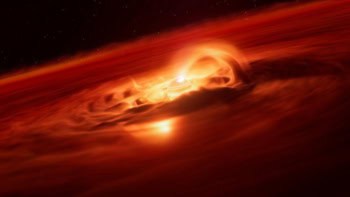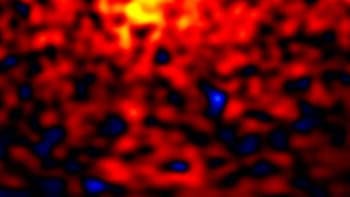The Cassini mission has made the most detailed ever study ever Saturn's largest moon, Titan, and its atmosphere. The results - which appear in seven papers published in Science today - could lead to a better understanding of the conditions that existed on the young Earth.

Titan’s atmosphere consists mainly of nitrogen, along with small amounts of organic material such as methane. The pressure at the surface is about 1.5 atmospheres, which is quite similar to the Earth, but the temperature is only about 90 K. At such low temperatures the methane in Titan’s atmosphere could play a similar role to the water in Earth’s atmosphere.
Titan’s surface appears to be young, with few impact craters, according to Steve Wall of the Jet Propulsion Laboratory and co-workers who used the Cassini Titan Radar Mapper to image about 1% of the surface. They also observed a variety of geological features such as volcanoes and surface flows with evidence for porous ice. Moreover, dark patches in the radar images imply that it could contain frozen hydrocarbons (Science 308 970).
Michael Flaser of the NASA Goddard Space Flight Center and colleagues used the Composite Infrared Spectrometer on Cassini to analyse the methane and carbon monoxide in Titan’s atmosphere, and found that the amount of these, and other hydrocarbon molecules present, vary with season. The atmosphere at Titan’s poles in winter may be similar to the ozone hole above the Antarctic, but with different chemistry (Science 308 975).
Other results show that the bulk composition of Titan’s upper atmosphere does not seem to have changed greatly since it was measured by the Voyager 1 spacecraft more than 20 years ago. Data from an ultraviolet imaging spectrometer and a neutral mass spectrometer provide evidence for the presence of several organic species, including molecular nitrogen, methane, molecular hydrogen, argon and a host of stable carbon-nitrile compounds.
Other papers report on how Titan’s atmosphere interacts with energetic particles, which come mainly from Saturn’s magnetosphere. These interactions provide energy for the continuous production of complex hydrocarbons and nitriles from atmospheric methane and nitrogen. Finally, results from a magnetometer show that Titan does not have an internal magnetic field.



